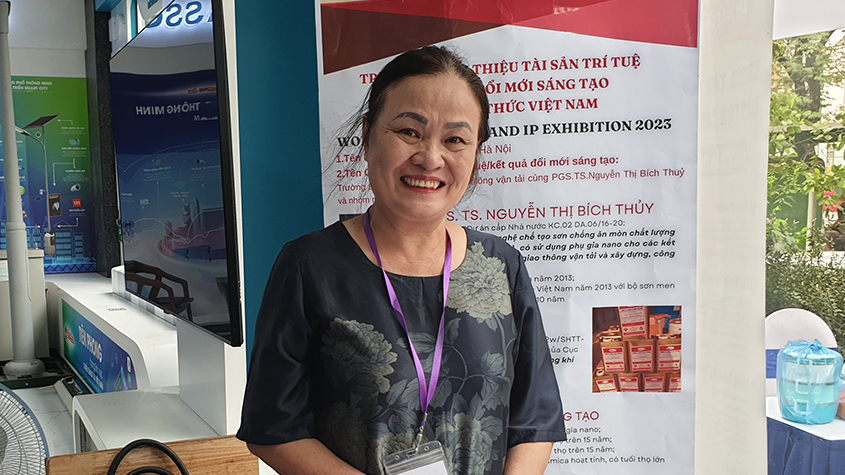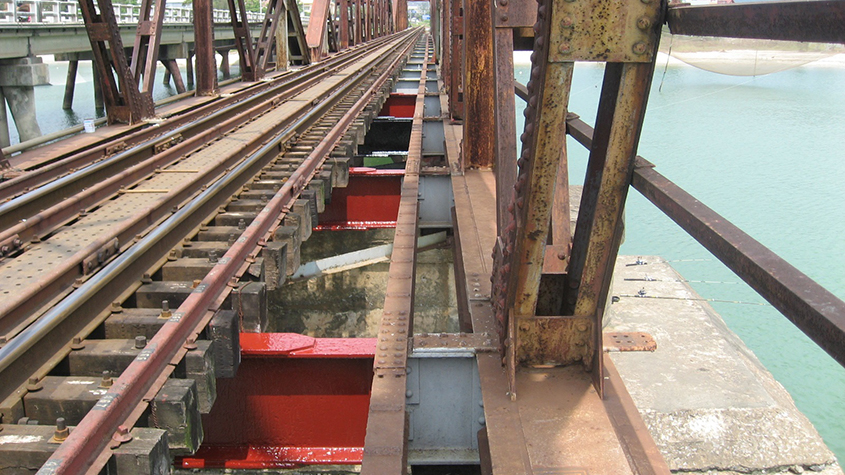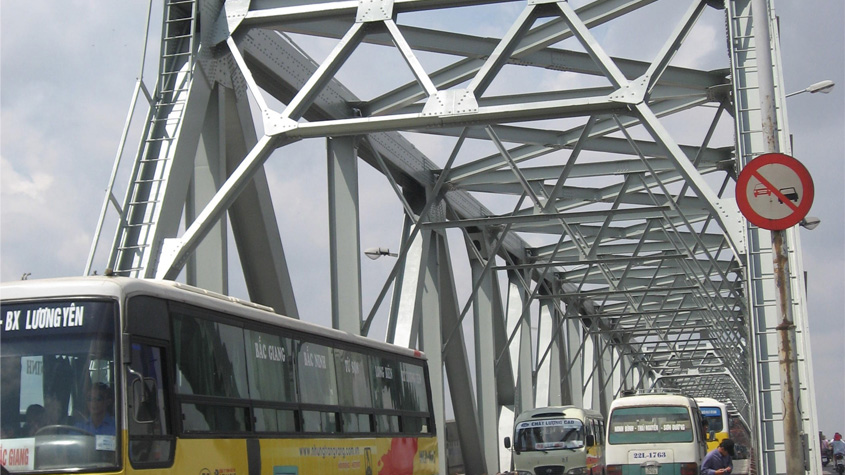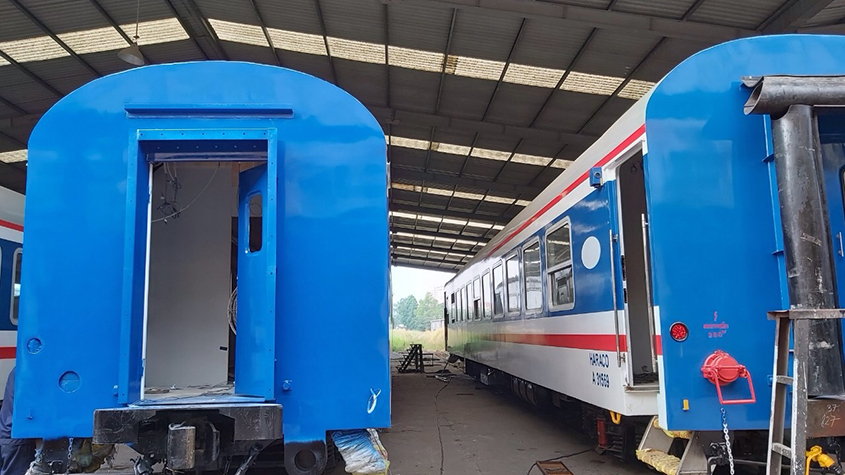Innovative Industrial Paints Resist Saline Conditions and Time in Viet Nam
Making industrial paint long-lasting and resistant to adverse conditions reduces its use and environmental consequences. A Professor of civil engineering in Viet Nam developed several protective paints with innovative technology that have a 15 years life span and are used on trains and bridges, with the firm intention to push that term longer.
Nguyen Thi Bich Thuy is a Faculty of Civil Engineering professor at the University of Transport Technology.

As a child, Prof. Nguyen loved natural sciences and studied organic synthetic technology and petrochemicals at Hanoi University of Science and Technology’s Department of Chemistry. She received her Ph.D.in 1993 on the synthesis of vanillin from wastewater of paper pulp and eugenol. Her innovative system produced synthetic vanillin to be used by the food and cosmetic industry, reducing the environmental pollution of papermaking wastewater and contributing to the development of the circular economy in Viet Nam.
She became the Director of the Institute of Building Materials and Construction of the Institute of Transport Science and Technology, and later a lecturer and scientific researcher at the University of Technology and Transport.
She contributed to national and state projects on long-lasting, high-quality anti-corrosion paint, using nano-additives, for steel structures in transportation, construction, and marine steel structures.
Long-Lasting, Salt-Resistant Paints
Prof. Nguyen’s research led to the production of 11 different kinds of anti-corrosion paints (primers, intermediates, and top coats) designed for specific uses and conditions.
One of Prof. Nguyen’s innovations is long-lasting protective salt-resistant paints for steel structures, like bridges, exposed to a saline air environment in coastal areas. The life span of the coating, she said, is over 15 years, reducing the need to add successive restoring layers of paint on the structures.
The anti-rust paint is applied in three layers: a primer coat containing rubber based on epoxy resin and zinc powder, an intermediate coat including mica mineral also based on epoxy resin, and the last coat based on polyurethane resin using nano additives. Nano additives disperse in the paint components and bring it heightened durability.

The long-lasting paint, without the nano additives, which is a more recent innovation, has been applied in Viet Nam since 1994 on several bridges, including the Chuong Duong Bridge in Hanoi city, the Ham Rong Bridge in Thanh Hoa, suspension bridges in Thanh Chuong, Nghe An, and the Nguyen van Troi Bridge in Da Nang city.

Another innovation is an environmentally friendly low-volatile organic compound (VOC) epoxy primer. The epoxy paint is rich in inorganic zinc and does not use organic solvents. She said it protects steel structures and is very effective during construction.
She also designed an epoxy-coal tar (PEK) paint for use on partially submerged and immerged structures with a high erosion rate. The Epoxy-PEK paint also resists bio-substances such as algae or other animals that attach themselves to structures and could damage them.
The higher resistance to erosion of Prof. Nguyen’s salt-resistant paints reduces their environmental impact since structures need only one coating system every 15 years instead of an average of 5 years for the competition.
Production and distribution of anti-corrosive paints
The anti-corrosive paints are not currently available to the general public but are used by large construction companies with specific needs, and produced on demand.
Two companies manufacture the anti-rust paints: Transport Technology Research and Development Joint Stock Company and Thanh Hoang Trading Joint Stock Company, with a production capacity of 200 metric tons annually.
Commercialization of patent-pending anti-corrosive paints for coastal steel structures.

Prof. Nguyen has one patent (No 3234) on Steel structure protection paint system working in coastal atmosphere. The applicant is the University of Transport and Technology with a co-authored research team.
She is looking for ways to widen the commercialization of the anti-corrosion coatings for steel structures in coastal areas as many companies want to adopt the technology. In the next five years, she plans to apply the salt-resistant paint to the field of marine construction in Viet Nam. She is also working on a complete coating based on fluor polymer resin that would be more durable than 20 years.



